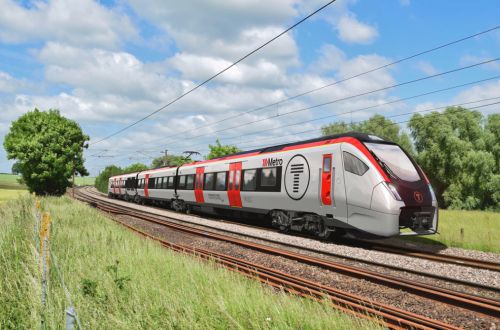The three-section tram-trains will be dual mode to enable them to be powered from either 25kV ac overhead electrification or batteries, while the Flirt trains will be of two types: 11 will be diesel-electric and the remaining 24 will be tri-mode to enable them to operate using diesel-electric, battery or overhead electrification power.
The tram-trains (picutured below) will operate on the lines from Cardiff to Treherbert, Aberdare and Merthyr Tydfil and will reintroduce tram operation on the streets of Cardiff after a gap of more than 70 years. The tri-mode trains will run in diesel mode south of Cardiff and in electric mode to Caerphilly and Rhymney to the north of the Welsh capital. The use of tri-mode trains will allow discrete electrification to take place thereby obviating the need to remodel 55 bridges. The DMUs will operate on the routes linking Cheltenham, Newport, Ebbw Vale, Cardiff, Bridgend and Maesteg.

All the trains will have level boarding, air-conditioning, power outlets, large passenger information screens, and space for six bicycles.
The Welsh government says it is investing around £800m in rolling stock and that by 2023 95% of journeys will be made on a new fleet of 148 trains. CAF and Vivarail were named in June as preferred bidders for contracts to supply new trains. CAF will supply and maintain 44 two-car and 26 three-car Civity DMUs, which will enter in service by September 2022, and deliver another seven two-car units by September 2024. Vivarail will supply five three-car class 230 battery-diesel hybrid multiple units converted from London Underground District Line trains for operation in North Wales.
For more detailed information on global fleet orders, subscribe to IRJ Pro.

